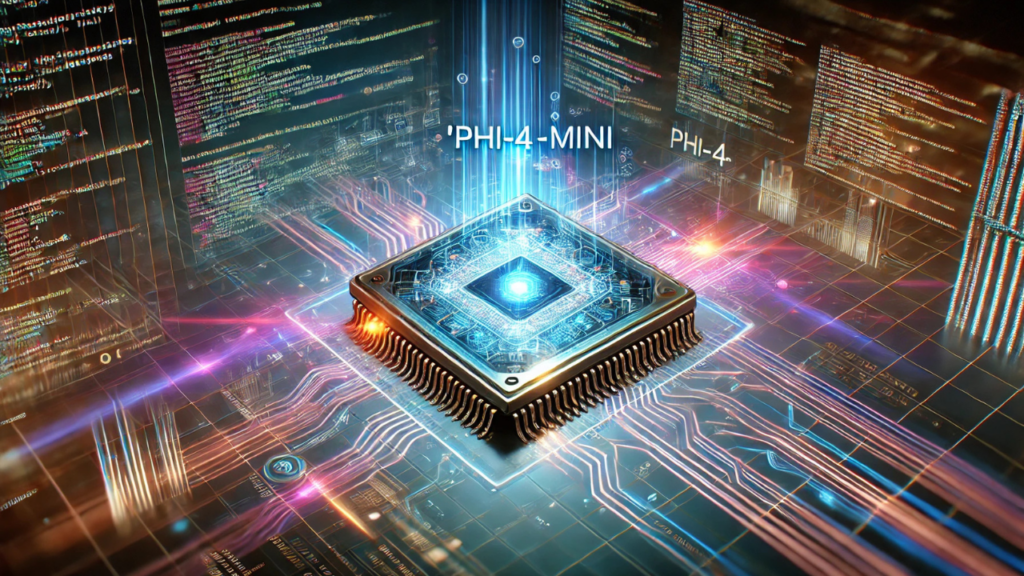Introduction
Artificial Intelligence (AI) is evolving rapidly, but bigger isn’t always better. Microsoft’s Phi-4-mini challenges this belief. While massive AI models like GPT-4.5 Orion dominate discussions, Phi-4-mini proves that efficiency can outperform size. This AI model, with just 1.3 billion parameters, delivers exceptional coding assistance. Even better, it runs locally on a laptop. For developers, this is a game-changer. No expensive cloud dependencies. No slow response times. Just fast, reliable AI right on your machine. Let’s explore why Phi-4-mini should be in every developer’s toolkit.
Why Smaller AI Models Are the Future
For years, AI advancements focused on increasing model size. More parameters meant better performance. However, Microsoft’s Phi-4-mini proves otherwise.
- It runs on consumer hardware, eliminating cloud costs.
- Outperforms models 5x its size in coding tasks.
- Prioritizes efficiency over brute force.
This shift mirrors past tech trends. Efficient models always win in the long run. Phi-4-mini is leading this change, making AI accessible to every developer.
Phi-4-Mini vs. Massive AI Models: Key Differences
How does Phi-4-mini compare to large-scale models? Here’s a breakdown:
|
Feature |
Phi-4-Mini |
GPT-4.5-Orion |
|
Parameters |
1.3 Billion |
1.8 Trillion |
|
Hardware Requirements |
16GB RAM |
High-end GPUs |
|
Performance on Coding Tasks |
Outperforms 5x larger models |
High but resource-intensive |
|
Cloud Dependency |
No |
Yes |
Phi-4-mini proves that smaller, targeted AI models can outperform larger, general-purpose ones. Developers now have a powerful, lightweight AI assistant that runs locally.
Running Phi-4-Mini on Your Laptop: Local AI Development
One of the biggest advantages of Phi-4-mini is its ability to run locally. You don’t need expensive cloud services. Just a decent laptop with 16GB RAM.
Why Local AI Development Matters
- Low latency: No cloud delays, instant responses.
- Cost savings: No recurring API fees.
- Privacy: Sensitive code stays on your machine.
This local-first approach benefits startups and indie developers. No need for expensive infrastructure. Just install Phi-4-mini and start coding smarter.
Seamless Integration with Ollama: AI in One Command
Setting up AI models is often a hassle. But not with Phi-4-mini and Ollama.
How Easy is the Setup?
- Install Ollama.
- Run one command: ollama run phi4-mini.
- Start coding with AI-powered assistance.
Key Benefits of Ollama Integration
- No complex setup: No containerization headaches.
- Fast performance: AI assistance with near-instant responses.
- Handles dependencies: No manual configuration needed.
I tested it with complex refactoring tasks. The results were impressive. Phi-4-mini provided clean, optimized code suggestions in milliseconds.
Multimodal Capabilities: Code, Images, and More
Phi-4-mini isn’t just for text-based coding tasks. It supports multimodal input, including images.
What Can It Do with Images?
- Convert code screenshots into editable text.
- Analyze UI mockups and suggest improvements.
- Detect bugs in screenshots and provide fixes.
This is groundbreaking. Previously, only massive models could handle such tasks. Now, developers can leverage these capabilities locally.
The Tech Behind Phi-4-Mini: Why It Works So Well
Microsoft used innovative techniques to optimize Phi-4-mini’s performance.
Key Features
- Mixture of Experts (MoE): Activates only relevant parts of the model for efficiency.
- Developer-focused training data: Optimized for coding, not general knowledge.
- Fine-tuning capabilities: Adaptable to different coding styles and projects.
These advancements make Phi-4-mini one of the most efficient AI models available today.
How Phi-4-Mini Empowers Developers
Phi-4-mini isn’t just another AI tool. It has practical applications that can enhance a developer’s workflow significantly. Here’s how:
1. Faster Code Completion
Phi-4-mini understands programming patterns and completes partial code snippets efficiently. This reduces development time and helps maintain coding consistency.
2. Debugging and Code Optimization
The model can analyze buggy code and suggest fixes. It also provides optimization tips, making code more efficient and readable.
3. Personalized AI Coding Assistant
With fine-tuning, developers can adapt Phi-4-mini to match their coding style. This ensures more relevant and contextual suggestions.
4. Reduced Dependence on Cloud APIs
Many AI-powered coding assistants require cloud connectivity, making them slow and expensive. Phi-4-mini removes this dependency, offering a more reliable and cost-effective solution.
Future Implications: The Rise of Small Yet Powerful AI Models
Phi-4-mini represents a major shift in AI development. Instead of chasing bigger models, the industry is realizing the value of efficiency. Smaller models with focused capabilities will likely dominate the AI landscape in the coming years.

Developers should embrace this shift. AI isn’t just about having the most powerful model. It’s about having the right tool for the job. Phi-4-mini fits that description perfectly.
Conclusion: The Future of AI for Developers
Microsoft’s Phi-4-mini is redefining AI for developers. It proves that size isn’t everything. Efficient, targeted models can outperform massive AI giants. With local execution, multimodal capabilities, and seamless integration with Ollama, this model is a must-have for developers.
As the AI landscape evolves, efficiency will take center stage. Developers need tools that enhance productivity without breaking the bank. Phi-4-mini delivers exactly that.
For those exploring the latest AI advancements in coding, staying informed with StartupHakk is a great way to keep up with groundbreaking trends like this.
Are you ready to revolutionize your development workflow? Try Phi-4-mini today and experience the future of AI coding firsthand.




